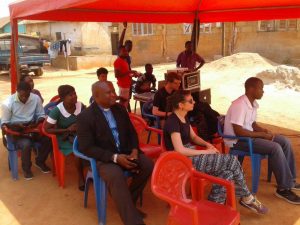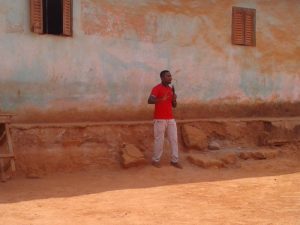Community outreach is an important function of the hospital here. Teams from the public health and psychiatry units travel out routinely to remote and hard to reach communities to counsel, educate and provide services like vaccinations and basic health assessments. There is also an outreach team that does individual home visits to look in on a few of the elderly and disabled in the village. I had the opportunity to accompany some of the teams on two different outreach missions so far, each very enlightening.
The public health unit conducts outreach visits to each of the surrounding communities once a month to check in on new moms, monitor their baby’s weights, give vaccinations and counsel on nutrition and family planning. See pictures below. This requires the permission and corporation of community leaders who help to inform the community and encourage people to attend. It is impressive how such simple interventions makes such an important impact on people’s lives. Each woman and her baby had a unique story – yet as they gathered together under that tree, I felt a true sense of community within the group, that they were all involved in raising their children together and were appreciative of the health worker’s presence.
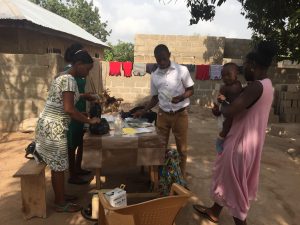

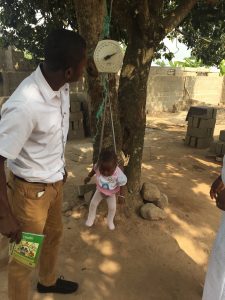
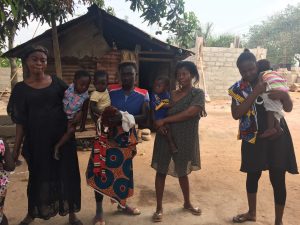
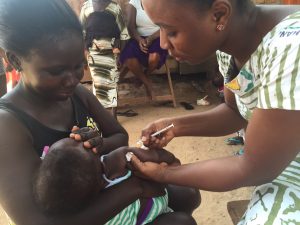
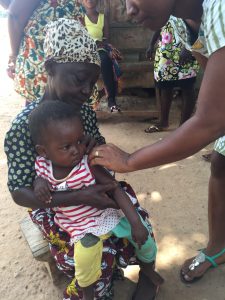
All pictures were taken and used with permission.
The psychiatry department organized what is a called a Durbar last week, or a mental health education outreach program similar to a town hall meeting in another one of the more remote communities in the district. The purpose was to increase awareness of mental illnesses, dispel some of the cultural misconceptions often associated with this and educate on the availability of treatments for these conditions. Again, it required permission and buy in from the village chief and community leaders to facilitate the gathering. As a sign of respect, we were invited to greet and sit with the chief in his compound. The psychiatric nurse spoke for about an hour in Twi – with the help of interpretation, I appreciated how skillfully he was able to explain mental illnesses making it relevant to the cultural setting and beliefs.
